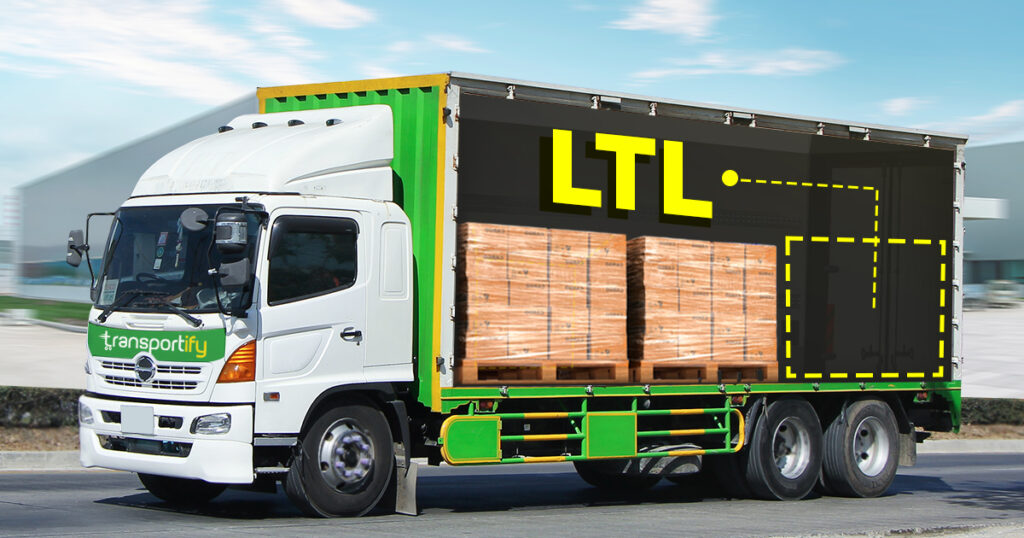In today’s logistics industry, Less-Than-Truckload (LTL) freight shipping has become a critical solution for companies seeking efficient and cost-effective transportation. It allows multiple shippers to share space within a single truck, maximizing capacity while reducing expenses. However, the real efficiency of LTL shipping depends on how well-connected and coordinated a carrier’s network is. With growing demand, tighter delivery timelines, and rising customer expectations, having a strong freight network makes all the difference. We will explore how CSA Transportation’s network advantage helps redefine the standard of reliability and consistency in freight movement—ensuring businesses stay competitive, agile, and well-supported in a rapidly changing marketplace.
Building Strength Through Connectivity and Coordination
The foundation of any effective LTL operation lies in its network structure. Unlike full truckload shipping, where one shipment dominates the entire vehicle, LTL requires precise coordination among multiple consignments. Each stop, transfer, and route adjustment must be managed with accuracy to maintain timing and minimize handling. A well-structured network of terminals allows freight to move efficiently between regions without unnecessary detours or delays. By maintaining this level of organization, a trucking company ensures that goods reach their destinations intact and on schedule, regardless of the route’s complexity.
A carrier with an expansive and carefully planned network can also optimize routing based on demand, geography, and shipment volume. This flexibility prevents bottlenecks and enables real-time adjustments in response to disruptions, such as weather conditions or traffic issues. Moreover, cross-border connectivity between Canada, the United States, and Mexico is a defining strength in modern logistics. When handled seamlessly, it eliminates the need for multiple transfers, reducing paperwork and customs-related delays. Such fluid coordination not only enhances delivery speed but also strengthens trust between shippers and their logistics partners.
The Direct Impact of Network Efficiency on Business Operations
An efficient LTL network doesn’t just move freight faster—it transforms how businesses manage their supply chains. Predictable transit times mean manufacturers can better plan production schedules and maintain optimal inventory levels. Retailers can respond swiftly to changing customer demands without overstocking, while distributors gain confidence in meeting delivery commitments. A connected system ensures every segment of the supply chain operates in sync, minimizing downtime and unexpected costs.
Equally significant is the role of data visibility within the network. The ability to track and monitor shipments in real-time offers the transparency that modern businesses demand. With up-to-date tracking systems, companies can make informed decisions, anticipate potential disruptions, and communicate accurate delivery expectations to their clients. The improved visibility doesn’t just enhance customer service—it creates a ripple effect of efficiency across departments.
Additionally, a robust network plays a vital role in sustainability. LTL shipping inherently supports eco-friendly practices by consolidating multiple shipments onto a single truck, reducing fuel consumption and emissions. When combined with route optimization and modern fleet management, the result is a logistics process that strikes a balance between performance and environmental responsibility. Businesses are increasingly valuing this balance, as sustainability becomes a defining factor in their long-term growth strategies.
The Human Element Behind Reliable Freight Movement
Behind every successful logistics operation is a team of professionals who understand that timing, communication, and precision make or break delivery performance. Even the most advanced network relies on the coordination and experience of its people to function smoothly. From dispatchers and drivers to warehouse teams and support staff, every role contributes to maintaining seamless freight flow. Their ability to adapt when faced with unexpected challenges—such as route closures, sudden weather shifts, or client-specific adjustments—ensures that shipments stay on track even under pressure.
Strong teamwork also fosters better problem-solving. When network terminals communicate effectively, decisions can be made quickly without bureaucratic slowdowns. For shippers, this means fewer delays and smoother transitions between checkpoints. Continuous training, technological tools, and shared communication systems enable employees to stay proactive and maintain high standards of service. The human touch, backed by efficient systems, is what gives an LTL network its true strength.
CSA Transportation’s operational approach exemplifies this balance between infrastructure and people. Its network structure thrives because it’s supported by teams who understand logistics not only in theory but also in practice. Their experience ensures that every shipment benefits from precise planning and real-time responsiveness, maintaining the consistency that businesses rely on.
Read More: https://acubi.us/how-heating-and-ac-systems-work-together-for-year-round-balance/
Adapting to a Shifting Logistics Landscape
The logistics industry is evolving rapidly, driven by digital transformation, shifting global trade patterns, and increasing customer expectations for faster and more reliable deliveries. In such an environment, a strong LTL network is a strategic necessity. Adaptability has become the most valuable asset for any freight carrier—whether it involves adjusting routes to avoid congestion, scaling capacity during seasonal demand, or integrating new tracking technologies for enhanced transparency.
Data-driven logistics now play a crucial role in maintaining efficiency. Predictive analytics and route optimization tools allow companies to anticipate issues before they escalate. By merging digital innovation with network-wide coordination, carriers can stay ahead of market trends rather than reacting after the fact. This proactive approach saves time, reduces cost, and ensures uninterrupted service continuity.
The success of modern supply chains depends on far more than just moving products—it relies on how efficiently, reliably, and sustainably those products reach their destinations. A strong LTL freight network serves as the backbone of that reliability, linking regions and industries through coordination, technology, and trust. CSA Transportation’s network advantage stands out because it combines infrastructure, communication, and adaptability into one cohesive system. It helps businesses operate with greater confidence, knowing that their shipments are supported by a network designed for precision and resilience. As global logistics continue to evolve, choosing an LTL carrier with such a dependable foundation remains one of the smartest investments a company can make.



